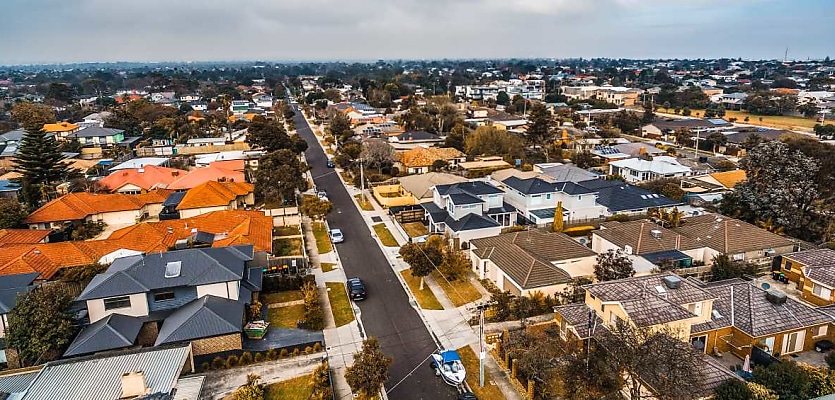Two smaller Australian markets led the way in price growth and sales this selling season, while Melbourne saw its strongest rebound in years, driven by rising investor interest and demand for affordable housing nationwide.
Hotspotting’s latest Price Predictor Index has revealed that smaller markets, such as Darwin and regional South Australia, have surged for price growth during autumn 2025, while Greater Melbourne has moved towards recovery.
Hotspotting general manager, Tim Graham, said that bolstered market sentiment and a broader pattern of recovery and growth had taken place over the last quarter, and driven increases in investor activity and transaction volumes across the nation.
Graham said that Hotspotting’s recent findings showed that demand had shifted with a growing interest towards more affordable unit markets.
“These markets have become a more prominent part of the recovery story in cities like Sydney and Canberra, where attached dwellings are increasingly in demand and leading the growth in some locations,” Graham said.
At the other end of the spectrum, Hotspotting data showed that the momentum in the Greater Perth market halted over the season.
Hotspotting director, Terry Ryder, noted that Darwin and regional South Australia stood out from the other markets over the season by offering the “most positive market fundamentals for home buyers and investors”.
“Darwin emerged as the standout performer, with 79 per cent of its markets ranked positively, driven by surging sales volumes and rising demand,” he said.
The data showed that growth prospects strengthened in various markets across the nation, with two-thirds of markets in regional South Australia being classified as “rising or stable”, and Melbourne’s 63 per cent of suburbs on the upward trajectory marking the market’s “strongest comeback in years”.
Ryder emphasised that the most recent data reinforced the notion that the “best opportunities for growth aren’t always in the largest or loudest markets”.
“Smaller capital cities, such as Hobart and Canberra, are performing better than they have in years, and a number of regional centres are delivering impressive and sustained upward sales momentum,” Ryder said.
Darwin surges to centre stage
Ryder noted that the Darwin market established itself as one of Australia’s most dynamic real estate markets over the most recent season, with a sizeable upswing to sales activity in which a significant 79 per cent of markets registered positive rankings.
“Sales volumes over the past year have skyrocketed, with a 49 per cent increase since the December quarter alone – nearly double the level recorded 12 months ago,” Ryder said.
Hotspotting’s findings showed that prominent growth hotspots included Palmerston suburbs, such as Durack, Gunn, Moulden and Rosebery, alongside areas in Darwin City, such as Leanyer, where house sales surged.
Unit markets in the Top End also thrived over the season, with the Price Property Index recording notable activity in suburbs such as Larrakeyah, Nightcliff, Stuart Park, Rapid Creek, Fannie Bay, Parap and Coconut Grove.
Ryder said that no other region’s market came close to Darwin’s results during this autumn period, which prompted him to forecast a “robust outlook” for the market’s property prices in 2025 that would outshine its performance from recent years.
Regional South Australia posts solid quarterly growth
Activity in regional South Australia continued to thrive from last quarter, with the market continuing to deliver consistent results by recording a 28 per cent boost to sales activity from the December quarter that raised annual growth to levels of 47 per cent.
“Two-thirds of markets in regional South Australia are performing positively in transaction levels, with only one market categorised as declining,” Graham said.
Areas within the coastal Alexandrina region emerged as standout performers, with the Goolwa, Middleton, Hindmarsh Island, and Strathalbyn markets all reporting significant gains in sales activity during the recent autumn season.
The Property Price Index also showed that further growth is on the horizon for regional South Australia, with Victor Harbor and the Copper Coast towns of Kadina, Moonta Bay and Wallaroo earmarked as rising markets according to Hotspotting’s data.
Greater Melbourne runs hot with broad-based activity
After Greater Melbourne’s sales in the December 2024 quarter were the highest since the COVID-19 boom, Ryder said that the region is “experiencing its most optimistic market conditions in years”.
“Sales activity has surged since early 2023, with December quarter levels up by 15.3 per cent compared to the previous year,” Ryder said.
Although sales were strongest in local government areas such as Monash, Moreland, Yarra, Frankston and Mornington Peninsula, heightened activity was still evident across Greater Melbourne, with 63 per cent of the region’s suburbs now ranking as rising markets.
Ryder also noted that attached dwellings such as units and townhouses comprise around 36 per cent of the region’s total residential sales over the season, with higher-density housing activity thriving the most in suburbs such as Bentleigh East, Brunswick, Richmond, St Kilda and Blackburn.
Hobart market rebounds from last quarter
Hotspotting’s data showed that prospects in Hobart’s property market measurably lifted over autumn 2025, with 60 per cent of its 35 markets now ranking positively in the Property Price Index.
Graham said that the Hobart market’s performance substantially improved from previous quarters, noting that the region’s proportion of suburbs with negative rankings dropped “dramatically from 57 per cent to 26 per cent in just one quarter”.
“Transaction levels are up 20 per cent quarter-on-quarter, making them 14 per cent higher than the same time last year,” Graham said.
“Leading this growth is the Clarence LGA, where suburbs such as Howrah, Lindisfarne, Geilston Bay, Rokeby and Risdon Vale continue to perform consistently or exhibit rising trends,” he explained.
The company’s data showed that Hobart’s momentum is expected to persist over the remainder of 2025, with the Sandy Bay, North Hobart, New Town and Lenah Valley areas ranking as thriving markets in the Property Price Index.
Apartment sales keep Canberra moving
Ryder noted that Canberra’s property market is currently on an upwards trajectory, which has been driven by a surge in apartment sales over the past three quarters.
“A year ago, apartments accounted for just 24 per cent of residential sales, but that figure has climbed to 38 per cent over the last two quarters, fuelling a broader increase in sales activity,” Ryder said.
Fuelling the uptick in apartment sales has been enduring activity in suburbs, such as Belconnen, and the inner-city suburbs of Kingston and Phillip, in which Ryder said “unit sales momentum remains strong”.
“Of the 80 markets analysed, 38 have rising transaction levels – many of which are apartment-focused markets,” Ryder said.
Interest in the Canberra market is expected to continue over the year, with Hotspotting’s recent findings showing that 54 per cent of the region’s markets ranked positively, compared to only 18 per cent that registered negatively.
Perth market stumbles for sales activity
Graham stated that Perth’s property market remained under pressure in the autumn season of 2025, with data from the previous December quarter further reflecting the market’s declining sales activity.
“As of the December quarter, 57 per cent of Perth suburbs are exhibiting negative trends, with another 17 per cent showing no clean pattern. Only 26 per cent of suburbs are recording positive sales activity,” he said.
Despite sales activity reducing compared to the past year, Graham said the Perth market still remains resilient.
According to the Property Price Index, the house markets of Como, Dianella, Morley, Piara Waters and Wellard recorded growth, while Cannington, Leederville, Maylands, Wembley, Yokine and West Perth, registered growth for units.
Hotspotting’s findings showed a downturn in sales activity in Greater Perth was fuelled by declines in various suburbs, such as Aveley, Balga, Butler, Cooloongup, Ellenbrook, Mount Lawley, Palmyra, Port Kennedy, Rockingham and Waikiki.
“Notably, the southern municipality of Rockingham, a previously affordable hotspot leading Perth’s boom, now hosts several declining markets, including Baldivis, Port Kennedy, Rockingham and Waikiki,” Graham concluded.







You are not authorised to post comments.
Comments will undergo moderation before they get published.